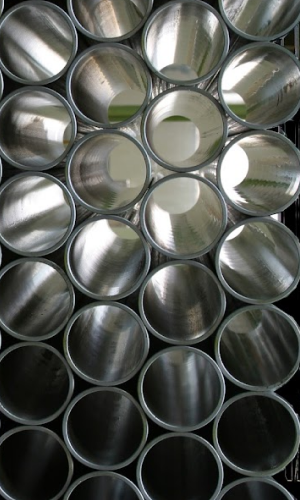Structural pipes are most often used for various types of building structures. For this type of pipe, the most important is the material strength and the static properties depending on the pipe profile. A steel pipe is considered an excellent construction element for a constructor due to the greatest use of the strength properties of the material. By selecting the appropriate wall thickness and the size of the pipe diameter, it is possible to obtain the lowest weight of the structure with the highest load resistance. That is why steel pipe is an indispensable structural element in all branches of the construction industry.

Calculate the weight of pipes
Use our calculator to determine the exact weight of pipes you are interested in.
Check
Standard EN 10210-1,2 Hot finished structural hollow sections of non-alloy and fine grain steels.
Standard EN 10219-1,2 Cold formed welded structural hollow sections of non-alloy and fine grain steels.
Application examples
- In the construction of industrial halls, e.g. as elements for roof trusses of all kinds.
- In electric railways for the construction of masts for electric and lighting cables.
- For the construction of bridges and towers.
- As a reinforcement for concrete ceilings.
- As coils for heating with hot water in winter and for cooling with cold water in summer.
- For the construction of various equipment, e.g. ladders, scaffolding, shelves, workbenches, bases for machines and devices, furniture, stands, etc.
- Due to the light construction, ease of assembly and disassembly and indestructibility during disassembly, steel pipes are eagerly used as a structural element in the construction of exhibition halls, stands, stages, platforms and other structures at all kinds of sports and artistic events.
- For the construction of overhead cranes and other types of cranes.
- In vehicles for the construction of chassis for wagons, cars, agricultural machinery, etc.